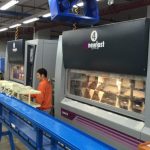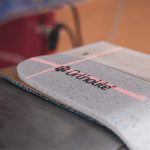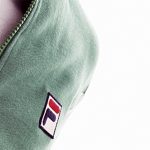True Temper Sports, Inc. recorded a 7.7% increase in net sales for the second quarter to $33.0 million from the $30.7 million for the same period last year. Adjusted EBITDA for the second quarter increased 3.8%, to $7.9 million from $7.6 million in the second quarter of 2006. The company recorded a net loss for the 2007 second quarter of $2.3 million, widening 35.3% from $1.7 million last year.
Net sales for the first six months of 2006 have held relatively stable at $62.6 million as compared to $62.3 million in the first six months of 2006; an increase of 0.5%. Adjusted EBITDA for the first six months decreased to $15.0 million from $16.3 million in the first six months of 2006. The company recorded a first half net loss of $5.4 million, worsening from $2.0 million last year.
In his comments about the companys performance, Scott Hennessy, president and CEO said, “As we had anticipated, sales for the second quarter increased on the strength of our new True Temper product offerings as well as an overall updraft provided by new club introductions and improvements in the global golf industry. During the second quarter we saw further strength in the Royal Precision family of brands, related to the acquisition we completed in 2006, as well as continued stability in our base True Temper steel golf shaft business. These positive factors more than offset a temporary decline experienced in our graphite golf product lines due to the timing of certain program launches by our key OEM partners. In addition to the overall strengthening of our golf business, our performance sports business delivered a record quarter, increasing revenue by nearly 70% over the second quarter of 2006. We are very pleased with our growth in the key categories of cycling and hockey, where new products and developing customer relationships are driving marketshare expansion for True Temper and ensuring that we fully execute on this critical diversification strategy.”
Mr. Hennessy continued, “Under normal circumstances we would expect an 8% revenue increase to generate more than a 4% increase in Adjusted EBITDA, but as communicated previously, we are facing some significant cost pressures in 2007. A critical raw material input into the production of our steel golf shafts is nickel, which has been tracking between two and three times the pricing levels of 2006. We are also experiencing medical cost inflation pressure that is adversely impacting our overall labor costs and gross margins. In addition to these two cost factors, our Mississippi steel facility has operated at less than peak efficiency, due in large part to the transition and training for production of the newly acquired Royal Precision products that are driving our top line growth. We are addressing each of these issues impacting our margins, and given the overall backdrop, we were relatively pleased to deliver Adjusted EBITDA growth for the quarter.”
Outlook
Commenting about the companys outlook for the future, Mr. Hennessy said, “We have finally seen the turning point on the top line that had been anticipated for 2007, and based on the strength of our current sales and product programs with key OEMs, we expect year-over-year sales improvement for the remainder of the year. In addition to the recovery of sales momentum for our golf shaft business, during the upcoming third and fourth quarters we are also putting programs in place that should continue to grow our performance sports sales by solid double digit percentages, and move this segment of our business well past 10% of our overall revenue base.”
Mr. Hennessy continued, “At this time, our outlook for bottom line profitability is not quite as optimistic as the revenue forecast. The three key cost pressures that have impacted our first half results will remain a critical focus during the remainder of 2007. Although nickel has moderated somewhat as of late, it continues to track at levels approaching twice that of 2006. To address this issue we have instituted specific conservation programs and we are also reviewing alternate technologies and plating techniques, as well as our marketplace pricing policies. In addition to materials, medical cost trend rates across the country are expected to continue to rise, and as a company we are working to address this issue. We plan to implement changes to our medical plans that will maintain this important employee benefit but will also begin to reign in the double digit inflationary trend rates experienced for our medical expenses. Lastly, we intend to make the necessary improvements in the operational efficiency of our Mississippi steel facility by focusing on lean manufacturing techniques and continuous quality improvement programs. Overall, we believe that profitability growth will continue to lag behind the sales improvements during 2007, but the cost containment and efficiency programs we are putting in place now should pay dividends nicely in the later part of the year and position us very well as we enter 2008.”















